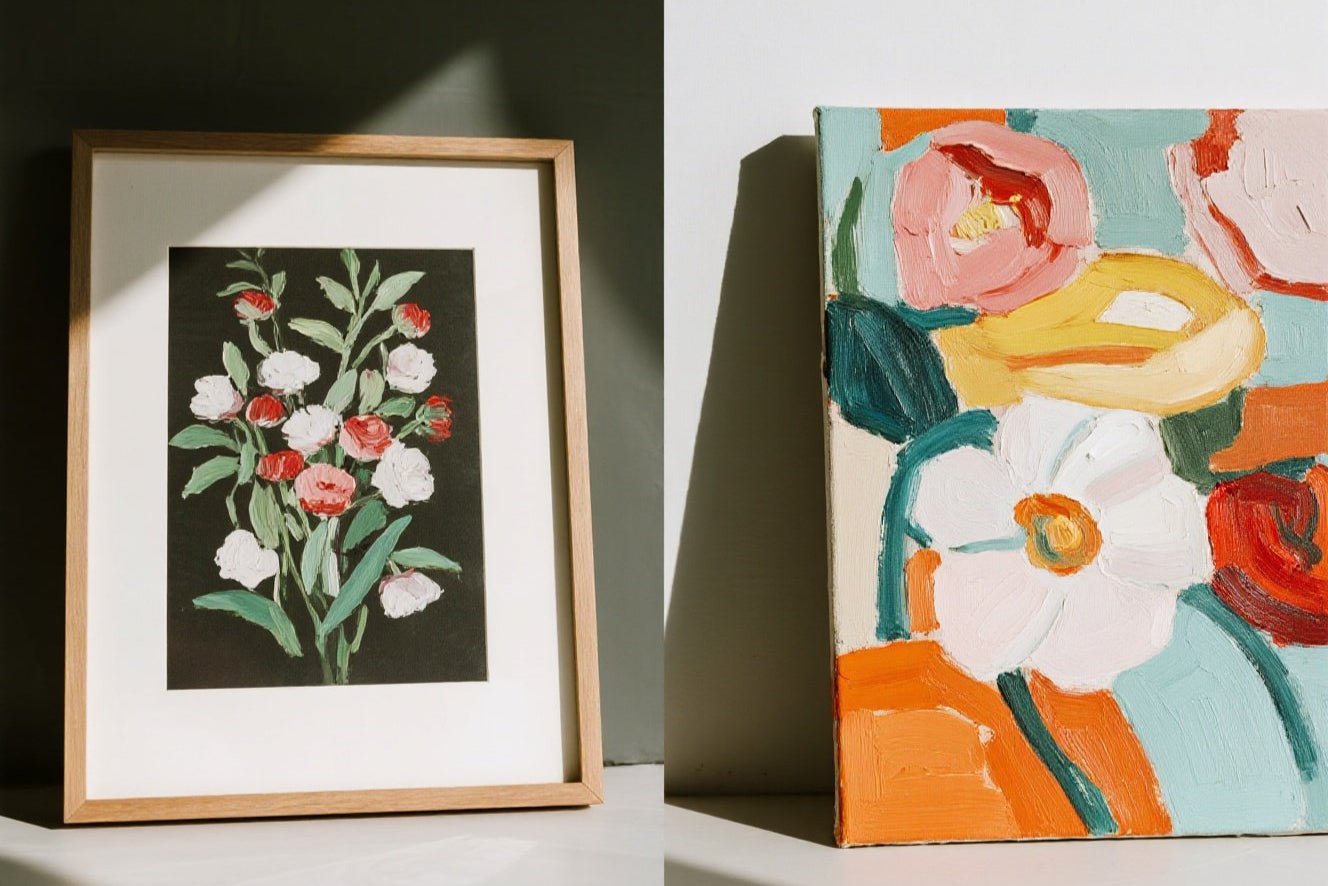In the realm of personalized home decor and professional art display, choosing the right medium for your cherished photographs or artworks is paramount. Two popular choices stand out: acrylic prints and canvas prints. Both offer unique aesthetic qualities and display characteristics, but when it comes to long-term reliability, durability, and overall value, which one truly reigns supreme? This in-depth guide will delve into the intricacies of acrylic and canvas prints, examining their composition, advantages, disadvantages, and suitability for various applications. By the end, you'll have a clear understanding of which printing method is more reliable for your specific needs, ensuring your memories and art are preserved beautifully for years to come.
Table of Contents
- Understanding Acrylic Prints
- Understanding Canvas Prints
- Direct Comparison: Acrylic vs. Canvas
- Choosing the Right Print for Your Needs
- Conclusion
Understanding Acrylic Prints
Acrylic prints represent a modern and sophisticated approach to displaying photographic art. They are renowned for their vibrant colors, sharp details, and a distinctive luminous quality that can make images appear almost three-dimensional. But what exactly goes into creating an acrylic print, and what are its defining characteristics?
What are Acrylic Prints?
An acrylic print is created by printing an image directly onto a high-quality photographic paper, which is then mounted behind a clear sheet of acrylic glass (also known as Plexiglas). The image is typically reverse-printed on the paper and then adhered to the back of the acrylic, creating a seamless, face-mounted display. This process traps the image between the acrylic and a backing material (often a Dibond or aluminum composite panel), protecting it from environmental damage and enhancing its visual properties. The acrylic acts as a protective layer, but also as a lens, intensifying colors and adding depth to the image. The edges are often polished, giving the print a sleek, contemporary finish that floats off the wall, creating a gallery-like presentation.
A close-up view of an acrylic print, showcasing its depth and vibrant colors.
Pros of Acrylic Prints
- Vibrant Colors and Enhanced Depth: The most striking advantage of acrylic prints is their ability to render colors with exceptional vibrancy and clarity. The acrylic layer acts as a light guide, enhancing the luminosity and saturation of the inks, making images pop with vividness. This effect also creates a sense of depth, giving the impression that the image is almost floating within the acrylic.
- Durability and Protection: Acrylic is inherently more durable and shatter-resistant than traditional glass. It provides a robust protective layer against UV rays, moisture, and airborne pollutants, which can cause fading and degradation over time. This makes acrylic prints highly resistant to environmental factors, ensuring their longevity.
- Modern and Sleek Aesthetic: The glossy, smooth surface and frameless presentation of acrylic prints lend themselves to a contemporary and minimalist aesthetic. They are particularly well-suited for modern interiors, art galleries, and commercial spaces where a clean, sophisticated look is desired.
- Easy to Clean: The smooth, non-porous surface of acrylic prints makes them relatively easy to clean. A soft, damp cloth is usually sufficient to wipe away dust and fingerprints, maintaining their pristine appearance.
-
UV Resistance: High-quality acrylic prints often come with built-in UV protection, which significantly reduces the risk of colors fading due to prolonged exposure to sunlight. This is a crucial factor for preserving the integrity of your artwork over many years.

An acrylic print displayed in a modern setting, highlighting its sleek design.
Cons of Acrylic Prints
- Higher Cost: Generally, acrylic prints are more expensive than canvas prints due to the specialized materials and manufacturing processes involved. The cost can be a significant factor, especially for larger prints or multiple pieces.
- Reflectivity and Glare: The glossy surface of acrylic can be highly reflective, leading to glare from direct light sources. This can sometimes obscure the image or make it difficult to view from certain angles. While anti-glare acrylic options exist, they often come at an additional cost.
- Weight: Acrylic prints, especially larger ones, can be considerably heavier than canvas prints. This might require more robust mounting hardware and careful consideration of the wall's load-bearing capacity.
- Susceptibility to Scratches: While more shatter-resistant than glass, acrylic can be prone to scratching if not handled with care. Microfiber cloths and specialized cleaning solutions are often recommended to prevent surface damage.
- Fingerprint Magnet: The smooth, glossy surface tends to show fingerprints and smudges more readily than the textured surface of a canvas print, requiring more frequent cleaning.
Understanding Canvas Prints
Canvas prints offer a classic, artistic appeal, transforming photographs into timeless pieces that resemble traditional oil or acrylic paintings. They are a popular choice for those seeking a softer, more textured aesthetic. Let's explore what defines a canvas print and its inherent strengths and weaknesses.
What are Canvas Prints?
A canvas print is an image printed directly onto a canvas material, typically made from cotton or polyester, or a blend of both. After printing, the canvas is stretched over a wooden frame, known as a stretcher bar, creating a gallery-wrapped effect where the image extends around the sides of the frame. This gives the print a three-dimensional presence without the need for an external frame, although framing options are also available. The texture of the canvas adds a tactile dimension to the image, softening sharp lines and giving it a painterly quality. Canvas prints are often finished with a protective coating to enhance durability and UV resistance.
Classic canvas prints, showcasing high restoration quality.
Pros of Canvas Prints
- Classic and Artistic Aesthetic: Canvas prints have a timeless appeal, mimicking the look and feel of traditional paintings. The textured surface adds a unique artistic touch, making them suitable for a wide range of decor styles, from rustic to contemporary.
- Reduced Glare: Unlike glossy acrylic prints, canvas prints have a matte or semi-gloss finish, which significantly reduces glare and reflections. This makes them ideal for spaces with direct lighting, ensuring the image is always clearly visible from any angle.
- Lightweight and Easy to Hang: Canvas prints are generally much lighter than acrylic prints, making them easier to handle, transport, and hang. This also means less strain on your walls and simpler installation.
- Cost-Effective: Canvas prints are typically more affordable than acrylic prints, offering a budget-friendly option for decorating large spaces or creating multiple pieces without compromising on quality.
-
Versatility in Framing: While often displayed as gallery wraps, canvas prints can also be easily framed to match existing decor or to add a more formal touch. This versatility allows for greater customization and integration into various design schemes.

Multiple canvas prints arranged together, demonstrating their versatility.
Cons of Canvas Prints
- Less Vibrant Colors and Detail: While modern printing techniques have improved, canvas prints generally do not achieve the same level of color vibrancy and sharp detail as acrylic prints. The textured surface can slightly diffuse the image, resulting in a softer appearance.
- Susceptibility to Damage: Canvas is more susceptible to physical damage such as punctures, tears, and scratches compared to acrylic. While protective coatings can help, they don't offer the same level of robust protection.
- Vulnerability to Moisture and Humidity: Canvas, being a fabric, can be more sensitive to changes in humidity and moisture, which can lead to sagging or warping over time if not properly cared for or if exposed to extreme conditions.
- Fading Over Time (without UV protection): Without proper UV-resistant coatings, canvas prints can be prone to fading when exposed to direct sunlight for extended periods. High-quality prints usually include this protection, but it's an important consideration.
- Dust Accumulation: The textured surface of canvas can accumulate dust more easily than the smooth surface of acrylic, requiring more frequent and careful cleaning.
Direct Comparison: Acrylic vs. Canvas
Now that we've explored the individual characteristics of acrylic and canvas prints, let's conduct a direct comparison across several key metrics to determine which offers superior reliability and suitability for different scenarios.
Reliability and Durability
When it comes to long-term reliability and durability, acrylic prints generally have an edge. The acrylic layer provides a superior barrier against environmental factors such as UV radiation, moisture, and physical abrasions. This robust protection ensures that the colors remain vibrant and the image stays sharp for decades without significant fading or degradation. Acrylic is also shatter-resistant, making it a safer option in homes with children or in high-traffic areas. Canvas, while durable in its own right, is more vulnerable to punctures, tears, and environmental fluctuations. While protective coatings can extend its life, it typically won't match the inherent protective qualities of acrylic.
Aesthetic Appeal and Visual Impact
The aesthetic appeal largely depends on personal preference and the desired visual impact. Acrylic prints offer a contemporary, high-gloss finish that enhances color saturation and depth, making them ideal for vibrant, high-resolution photographs, especially landscapes, cityscapes, and abstract art. They create a striking, modern statement. Canvas prints, on the other hand, provide a softer, more traditional, and artistic look. The textured surface adds a painterly quality, making them excellent for portraits, fine art reproductions, and images where a classic, gallery-like feel is desired. They blend seamlessly into more traditional or rustic decor.
A side-by-side comparison of an acrylic print and a canvas print, highlighting their distinct visual characteristics.
Cost-Effectiveness
In terms of cost, canvas prints are generally more budget-friendly than acrylic prints. The materials and manufacturing process for canvas are less expensive, making them an accessible option for decorating larger spaces or for those on a tighter budget. Acrylic prints, due to the specialized acrylic material and precise mounting techniques, command a higher price point. While the initial investment for an acrylic print is greater, its superior durability and longevity can be seen as a long-term cost-effectiveness, as it may require less replacement or restoration over time.
Maintenance and Care
Maintaining both types of prints is relatively straightforward, but with slight differences. Acrylic prints, with their smooth, glossy surface, are easy to wipe clean with a soft, damp cloth and mild cleaner. However, they are prone to showing fingerprints and can scratch if abrasive materials are used. Canvas prints, due to their textured surface, can accumulate dust more readily and require gentle dusting with a soft brush or a vacuum cleaner with a brush attachment. Care must be taken to avoid moisture and direct contact with sharp objects to prevent damage.
Versatility and Application
Both acrylic and canvas prints are versatile, but excel in different applications. Acrylic prints are often favored in modern homes, corporate offices, and art galleries where a sleek, high-impact presentation is desired. Their resistance to moisture also makes them suitable for bathrooms or kitchens, provided they are not in direct contact with water. Canvas prints are highly versatile for residential settings, adding warmth and a classic touch to living rooms, bedrooms, and hallways. Their lightweight nature makes them easy to move and rearrange, and they are particularly popular for creating gallery walls or multi-panel displays.
Here's a comparative table summarizing the key differences:
| Feature | Acrylic Prints | Canvas Prints |
|---|---|---|
| Aesthetic | Modern, glossy, vibrant, high-definition, deep colors | Classic, textured, matte/semi-gloss, softer, painterly feel |
| Durability | Excellent (shatter-resistant, UV protection, moisture-resistant) | Good (susceptible to punctures, tears, humidity without protection) |
| Reliability | Very High (long-lasting color and detail retention) | High (good longevity with proper care and protection) |
| Cost | Higher | Lower |
| Glare | High reflectivity (can cause glare) | Low reflectivity (minimal glare) |
| Weight | Heavier | Lighter |
| Maintenance | Easy to wipe, prone to fingerprints/scratches | Dust accumulation, requires gentle cleaning |
| Best For | Vibrant photos, modern decor, commercial spaces, high-impact art | Portraits, fine art, traditional decor, gallery walls, cozy spaces |
Choosing the Right Print for Your Needs
The decision between an acrylic print and a canvas print ultimately boils down to your specific needs, preferences, and the context in which the artwork will be displayed. Consider the following factors to make the best choice:
Consider Your Budget
If budget is a primary concern, canvas prints offer a more economical solution, allowing you to decorate more extensively or acquire larger pieces for less. If you're willing to invest more for superior durability, vibrant aesthetics, and a modern presentation, acrylic prints are a worthwhile long-term investment. Remember that while acrylic prints have a higher upfront cost, their longevity might save you money on replacements in the distant future.
Consider Your Decor Style
Your existing interior design plays a significant role in determining the most suitable print medium. For contemporary, minimalist, or industrial decor, the sleek, frameless look of acrylic prints integrates seamlessly, enhancing the modern aesthetic. If your home features a more traditional, rustic, bohemian, or classic style, the warm, textured feel of canvas prints will complement the decor more harmoniously, adding a touch of timeless elegance. Consider the overall ambiance you wish to create in your space.
Consider the Image Type
The nature of the image itself can guide your decision. For photographs with vivid colors, sharp details, and a desire for a high-gloss finish—such as landscapes, cityscapes, abstract photography, or macro shots—acrylic prints will truly make the image pop and enhance its visual impact. The depth and luminosity of acrylic can bring out the best in such images. For portraits, wedding photos, family photos, or art reproductions where a softer, more painterly effect is desired, canvas prints are often the preferred choice. The texture of the canvas can add a unique artistic dimension to these types of images, giving them a classic, fine-art feel. Consider how the medium will interact with the subject matter of your image.
Conclusion
In conclusion, both acrylic prints and canvas prints offer distinct advantages and cater to different aesthetic preferences and practical requirements. When it comes to sheer reliability and durability against environmental factors and physical damage, acrylic prints generally emerge as the more reliable option. Their robust protective layer, UV resistance, and vibrant color rendition make them an excellent long-term investment for preserving high-resolution, impactful imagery in modern settings. However, their higher cost and susceptibility to glare are factors to consider.
Canvas prints, while perhaps less inherently durable than acrylic, offer a classic, artistic appeal, a more budget-friendly price point, and reduced glare. They are highly reliable for creating a warm, traditional ambiance and are particularly well-suited for portraits and art reproductions where a softer, textured look is desired. With proper care and protective coatings, canvas prints can also offer significant longevity.
Ultimately, the choice between acrylic and canvas prints is a personal one, driven by your budget, decor style, and the specific visual characteristics of the image you wish to display. There is no single "best" option; rather, there is the best option for *you* and your unique needs. By carefully weighing the pros and cons of each, you can confidently select the printing medium that will best showcase your art and memories for years to come.



